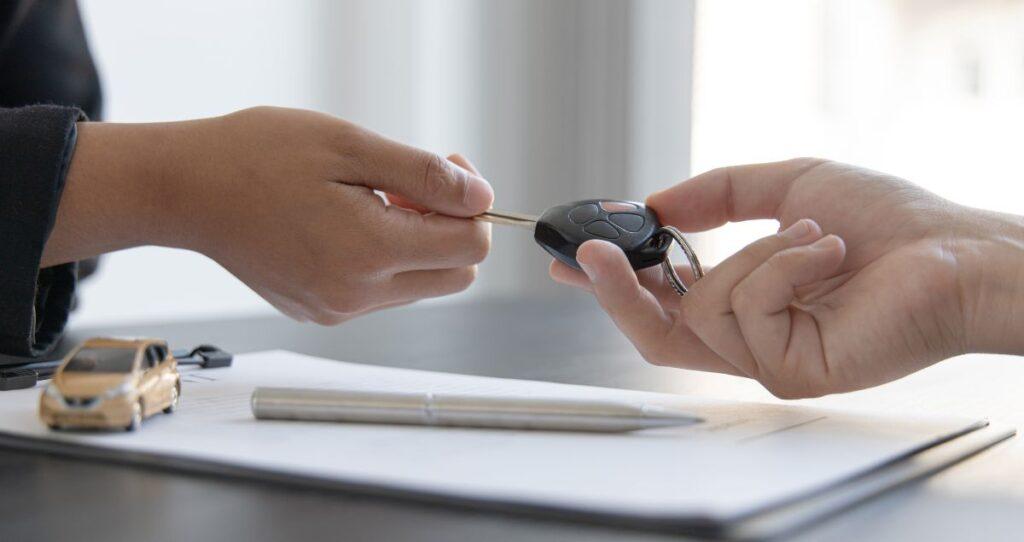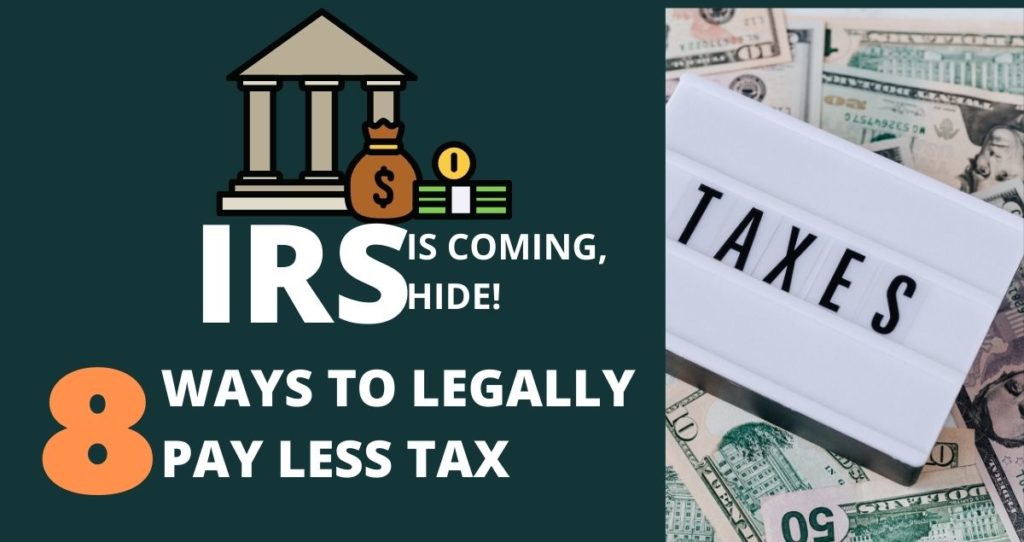Whether you want to buy a new car or a used one, you should focus on saving money for the car as much as you want to own the car. Even if you finance the purchase with a car loan, you still need to save for a down payment and underlying fees. Putting money down when buying a car helps you lower the cost of the car by lowering interest charges. Regardless of the type of car you want to buy or how you will finance the purchase, this article will be your complete guide on how to save money for a car and how much you should save.
Although many people prefer to finance their cars with car loans, it is possible that you can save up for a car and pay it off with cash. It will all depend on the kind of car you want to buy, how you want to finance the car purchase and your current financial situation.
Note from the author: If possible, avoid purchasing a brand-new car or financing the car with a car loan. New cars lose value much faster to a level where it does not make sense financially to buy new cars or finance your car purchase with credit. If you can, save enough money and buy a used car with cash.
Key points to consider when buying a car
The following are key points to consider when you are trying to buy a car.
- Buy a new car. The car will cost you more money but it will come with fewer maintenance expenses, advanced gadgets, and updated safety features.
- By used car. Used cars are cheaper but they come with less updated gadgets and safety features. In addition, the car might cost you more money in maintenance expenses. The good news is that it will relatively take less time to save money for the car.
- Pay with cash. Buying a car with cash will prevent you from getting a car loan. With this strategy, you will not pay interest, some fees, and other charges. As a result, you will save a lot of money. However, it might take a long time to save the needed capital depending on the car you want to buy.
- Get a car loan. Financing a car purchase with credit comes with its setbacks and it is never a good idea. Besides paying a lot of interest and fees, the car will depreciate fast which costs you more money. New cars can lose as much as 50% of their original values within their first 5 years.
If you want to finance the car with a car loan, you’ll need to save for a car down payment, fees, interest, and charges. On the other hand, if you are buying a car with cash, you will only need to save for the total cost of the car plus extra fees. It will also depend on how and where you buy the car. For example, the process of buying a car at Craigslist is completely different from purchasing a car at a dealership even if you are paying with cash.
This article will be your complete guide on how to save money for a car purchase regardless of the car you are buying or how you are financing the purchase. In addition, I will help you decide the car that is best for you based on your current financial standing and what you expect from the car.
Without further ado, here are 9 tips to save for a car purchase.
1. Know the car you want to buy(brand-new car or used car)
The amount of money you need to save for a car will directly depend on the car you want to buy when you want to buy it, and how you will finance the car. For example, if you have a low income and want to buy a brand-new car, it might take you longer to save up for a car. In this case, it would be a good idea to save for a used car instead of a new one. For example, instead of saving $5,000 as a down payment for a $30,000 brand-new car, you can purchase a $5,000 used car. This way, you will not have to get a car loan to finance the purchase.
- Brand new car. Brand new cars cost more money and take longer to save money for them. But, the ongoing repair and maintenance costs for brand-new cars are relatively low. Besides routine maintenance, brand-new cars do not break down very often. However, you risk facing high depreciation rates on new cars. According to LendingTree, a brand-new car can lose up to 20% of its original value in the first year and more than 40% in the first five years. It is estimated that a new car usually loses up to 15% per year after its first year.
- Used card. Used cars are usually cheaper because fast depreciation happens during their first 5 years. When you buy a used car, you get to save around 40% of its original value for a car that looks pretty much new. If you are looking for a good used car consider cars with low mileage that are being sold by original owners. Original owners understand the health of their cars and they sell them for good reasons. In other words, they are not flipping their cars for profit.
2. Decide how you will finance the car and how much it will cost you
After choosing between a new and an old car, you will need to know how much the car will cost you. In this example, we will consider the options of buying a brand-new car and a used car. In addition, we will evaluate how your costs will differ when you buy a car with cash or finance your car purchase with a car loan.
- Buying a car with cash. If you want to pay with cash, you will need to save money for the entire cost of the car. For example, if you are buying a $20,000 car, you will need to save at least $20,000 plus taxes. On the other hand, if you only need a used car for $10,000, you can easily save only $10,000 and pay with cash. This is possible when you buy your car at places like Craigslist where you meet the owner of the car and pay them with cash. You will also pay 6.5% taxes on average when the title is being transferred. Some states charge higher taxes than others. So, include tax charges when saving for a car. By default, used passenger cars come with fewer sales taxes.
- Financing your car with a car loan. When you are financing a car with a loan, things get a little complicated compared to paying with cash. First, you will need to secure a car loan. Dealerships and banks work together to ease the car loan process. At the end of the day, both parties benefit from the sale. Usually, the loan provider will check your credit score and credit history, and assess how many loans you have already such as other car loans, personal loans, credit card debts, student loans, etc. Lastly, the lender will check your income to make sure that you can afford to make your monthly payments.
The cost of financing a car using a car loan
In case you are financing the car with a car loan, you need to know exactly how much you need to save. Most car loans require a down payment. Usually, a down payment is a percentage of the total cost of the car. Experts suggest that you put down at least 20% for new cars and at least 10% for used cars. The higher your down payment, the better. A down payment helps you lower the cost of the loan. For example, if you are buying a $30,000 brand-new car, you should put down at least $6,000.
The loan will also come with an interest rate that is included in your monthly payment. To qualify for lower auto loan rates, you will need to have a good credit score and a solid credit history. People with bad credit scores usually get denied credit or pay higher interest rates due to the risks they pose.
You will also pay fees when buying a car with a loan which can include some of the following.
- Sales Tax. Many states charge a sales tax and it is usually a percentage of the cost of the car. The fee differs from one state to another.
- Destination fees. This fee covers the cost of transportation of the car from where it was made to where it is being sold at the dealership.
- Advertising fees. This fee could be included in the total cost of the car.
- Insurance. Insurance is mandatory when financing a car with a loan.
- Document fees. This fee is usually charged for registration and title.
- Origination fee. This is the commission for processing and underwriting your car loan application.
- Fabric protection fee. This fee is like a warranty
- Paint protection fee
- Pre-payment penalty. Some lenders apply this fee when you pay more than you are supposed to in a given period.
The terms of the car loans are usually from 36, 60,72, to 84 months. Short-term loans usually come with much lower interest rates. To save money for a car, you need to know how you will finance the car and include hidden fees in your savings plans.
3. Know how much you should save for a car and establish a car-savings fund
At this point, you know the car you want and how much it will cost you. Now, it is time you establish a savings fund that will hold your savings. If you want to buy a car with cash, you will need to save the total amount required to purchase the car. For example, if the car will cost you $20,000 you will need to save a little more than $20,000 for the purchase, taxes, and some fees.
On the other hand, if you want to finance the car with a loan, you will need to save for the needed down payment, interest rates, fees, and charges. For example, if you are buying the same car for $20,000 and need a 20% down payment, your saving fund should have:
- $4,000 for a down payment(20%).
- $1,600 to $2,000 (8% to 10% of the car’s price) for fees.
- At least $1,000 as a safety net to cover ongoing expenses such as monthly payments.
So, if you want to finance a $20,000 car with a loan, you should have at least $7,000 in your savings fund. This amount will cover the down payment and all fees. In addition, having extra cash will help you get started with your payments without falling behind.
4. Decide when you want to buy the car
Now that you know the car you want to buy, and how much it will cost you, it is time you decide when you need to buy the car. To properly save money for a car, you need to know when you want to buy a car. Let’s assume that you want to buy a car in one year. We will use the example we covered above(a $20,000 car) to see how you can save up for your car.
- Saving $20,000 cash for a car in one year. To make sure that you also cover the extra cost of buying this car such as tax, we will assume $22,000 to be your saving goal. So, to save that $22,000 in one year, you will need to stash away $1830/month for 12 months. This saving rate might be a bit higher due to a shorter saving time. If you want to lower your monthly saving rate, you will need to increase your timeline. For example, instead of wanting to buy a brand new car with cash in one year, you can elect to do it in 2 years. This way, you will lower your saving rate in half.
- Saving $7,000 in one year for a down payment, fees, charges, and taxes. This option is for those who want to finance that $20,000 car with a car loan. To save this money for a car, you will need to put aside around $580/mo. At the end of the year, you will have saved $7,000 for a car down payment and underlying expenses.
So, how are you going to save $580/mo for a down payment or $1830/mo when buying a car with cash? Well, this is where you look into your finances and make tough and aggressive money-saving decisions.
The next few sections will cover how to save money for a car using your existing income or external sources.
5. Create a budget that allows you to save extra cash
Saving money for a car can sometimes be a huge challenge, especially on a meager income. With proper budgeting strategies and the discipline to keep up with your saving habits, you can easily save up for a car in no time. So, how can you afford to save the money we just calculated to buy your car in one year? This is where creating a budget becomes a necessity.
A budget is nothing other than a written format of all your incomes and expenses and some savings targets. In this case, you want your budget to allow you to save either $1830/mo when buying a car with cash or $580/mo when financing your car with a car loan. A budget will allow you to stay on the right path and avoid excessive spending. Any money you save will go directly into your car saving fund.
You might also like: What is budgeting and how does it work?
6. Lower your expenses
The purpose of a budget is to help you see where the money you make is being spent and how to cut down some of your expenses to increase your savings. If you want to aggressively save money for a car, you will need to lower your expenses. When it comes to reducing expenses, many people think they have to go through financial misery and eat once a day. Reducing your expenses has nothing to do with starvation or depriving yourself of what you need.
Let’s take a look at an example of how healthy expense reduction works.
Do you like Starbucks coffee? Well, you might need to stop spending $5/day on coffee every day. Why? Because the $5/day you spend on coffee equals $1,825 in one year which is 26% of your needed $7,000 car-saving goal. That is you can easily save 26% of your car down payment by avoiding Starbucks. Just like coffee, there are other things you can temporarily stop buying such as your movie subscriptions, eating out every day, etc. The secret to saving money for a car or anything of value is to eliminate your wants and reduce how much you spend on your needs.
7. Get a side hustle
If after reducing your expenses, you are not able to come up with the needed monthly saving goal, it will be necessary to get a part-time job or a side hustle. The beauty of a part-time job is that you can easily pick it up in no time and start saving right away. The money you make with your side gig should go directly into your car saving fund. A mistake many people make is to increase their expenses when the extra cash starts pilling in. Remember, you got the job to save money for a car not to buy extra coffee or clothes.
8. Automate your savings
Automation is probably the most effective way to save money for a car. Since you have created a car-saving fund, it will be crucial to automate the money into the account. An effective way to automate money into the account is to directly have your boss deposit your paycheck into the account. You will not be tempted to spend the money if you do not touch it.
9. Sell your old car or trade it in
The last tip on how to save money for a car is to sell an old car you have. For example, if you have multiple cars, you can easily get rid of the one you don’t need for quick cash. The amount you raise from the sale can help you bump up your savings fast enough to afford the car. You can also trade your car in when buying the one you want. This trick can help you finance the car much faster.
Benefits of buying a brand-new car
If you want to save money for a new car, you will not be disappointed with the performance of the car and the other benefits that come with it. Brand new cars come with better features, gadgets, and updated safety features compared to older models. You also get a warranty when you buy a brand-new car which comes in handy in case something happens to the car. You can also customize a new car in some cases. Finally, brand-new cars have lower maintenance expenses and might have better mileage per gallon due to higher efficiency and reliability.
Drawbacks of buying a new car
A wise man once said,” Everything good comes at a cost.” New cars also come at a higher price. The cost of buying a new car is always higher compared to used cars. If you are financing the car with a loan, you will even pay more money in sales taxes, interest on the principal amount, and underlying fees. Overall, new cars cost you more money when you finance them with credit.
The biggest downside of new cars is probably a fast depreciation rate. A new car can easily lose as much as 20% of its original value in its first year and up to 15% after the first year for 5 years. In other words, if you buy a brand-new car right now, it will be worth almost 50%-60% of its original value 5 years later. In case you financed the purchase with a loan, you will be paying interest on the original value of the car a few years later whereas, in reality, your car is worth only 60% of its original value
Benefits of buying a used car
Many people take out car loans because they want shiny and upgraded cars or because they cannot finance cars they want with cash. But, if you have saved money for a car, you should probably consider a used car due to the exceptional benefits you get. Used cars usually have already depreciated which makes them more affordable compared to new cars. You also get more value when you find a great deal. In case you finance the car with a loan, the interest you pay will also be lower due to a small principal amount. Used cars will also save you money in the long term. Paying cash will automatically prevent you from getting a car loan which will save you a ton of money in interest, charges, and fees. Another benefit of a used car is that your car insurance and registration fees will also be lower.
Drawbacks of buying a used car
Just like anything else you purchase, buying a used car comes with its drawbacks. Being used means it has been released for quite some time. This means the risks of breaking down are higher compared to new cars. Features in used cars are also not upgraded and in most cases, they are less efficient. In addition, used cars come with higher maintenance costs. Furthermore, you might lose some incentives offered by car manufacturers and dealerships on new cars.
Should you buy a new car or a used car: Which one is best?
When it comes to buying a car, it is always a good idea to buy a used car. Instead of saving money for a car down payment, use that amount to purchase a used car. For example, if we look back at the example we used earlier, instead of saving $7,000 for a car down payment, fees, and tax, use that $7,000 to buy a used car with cash. The benefits of buying a used car outweigh the downsides. That is the new car would have depreciated and you can easily buy it with cash due to the low cost.
Paying it with cash will also prevent you from getting a car loan. Without a car loan, you will not have to worry about fees and interest charges.
Since a new car depreciates faster, buying a used car means you are getting a good deal. Keep in mind that it depends on the year the car was made. For example, if you are buying a 2021 used car in 2022, there will be no big difference in prices. Most lenders price these cars almost at the same prices. So, if you want more value from a used car, go for cars that have depreciated already. A 4 to six-year-old car should be a good range to focus on. Cars in this range have experienced fast depreciation rates but they are not too old to fall apart. In other words, you will be getting a good deal.
Buying new cars comes with its setbacks. The fact that new cars are not affordable and depreciate faster makes them less appealing to people who care about their money. You might also need to take out a car loan to finance the purchase which adds up the cost of the car due to interest and fees.
How to easily qualify for a car loan?
After saving money for a car down payment, you will need to take an extra important step. You need to secure a loan from your lender. Even if you have saved for your down payment, it does not mean you will qualify for a car loan. Car loan providers will still need to evaluate the health of your credit and other factors to estimate your creditworthiness.
The following are tips to help you get approved for a car loan much faster.
- Check your credit reports. Lenders usually evaluate your credit history and information reported on your credit reports. Your job is to make sure that your credit reports are fully updated, and have no errors or inaccuracies. Make sure that you dispute errors and inaccuracies in your credit reports and clean up your credit reports as much as possible.
- Increase your credit score. Every lender wants a borrower who poses less risk. Your credit score helps car loan issuers to determine how risky it is to lend you money. Although there is no minimum industry credit score for car loans, you should always try to at least have a good credit score to buy a car. Not only that a good credit score get you approved much faster, but also, you will also qualify for a lower interest rate.
- Have proof of income. The car loan you will be taking out must be paid together with interest, fees, and charges. Unless you have a stable income to cover your monthly payments, you will default on your car loan. Lenders do not accept borrowers without proof of income.
- Lower your debt-to-income ratio(DTI ratio). Lenders like borrowers who can easily afford to pay off their loans with less stress. Your DTI ratio shows how much debt you have compared to your income. A higher ratio indicates that you have too much debt already. For this reason, you cannot afford to take on more loans. A good rule of thumb is to keep your DTI ratio under 28%.
The bottom line
Whether you want to save money for a used car or a new one, you must take action. Knowing the car you want and when you need to buy the car is crucial to establishing a winning saving plan. It is also important to choose between paying with cash or financing your car with a loan. Both options come with benefits and drawbacks. If your income is tight, you might consider buying a cheap used car first and buy a new one only when you can afford it.
Lenders also evaluate your creditworthiness before they approve you for the loan. For this reason, you must focus on rebuilding your credit at the same time as you are saving for the car. Having a good credit score and solid credit history will increase your approval rate. In addition, a good credit score will help you qualify for a lower interest rate.







